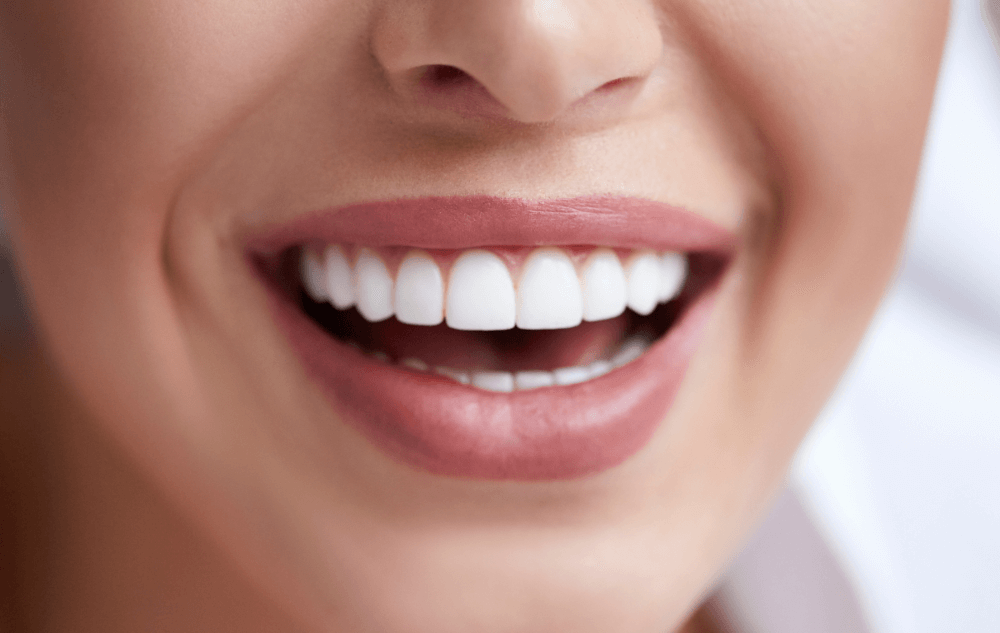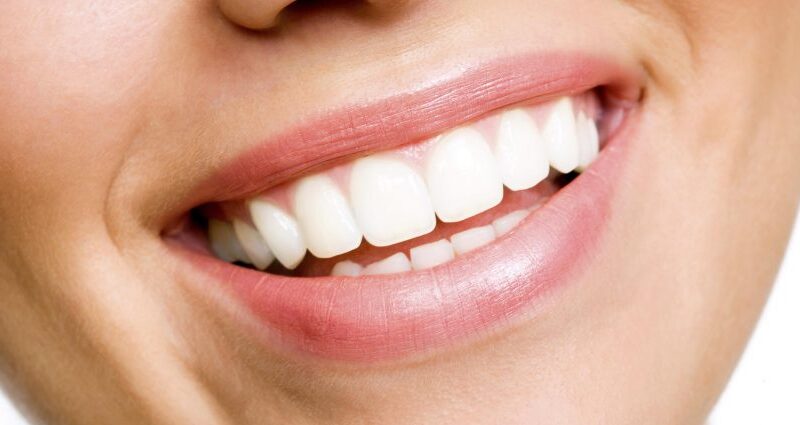
The Ultimate Guide to Teeth Whitening: Methods, Benefits, and Risks
A bright, radiant smile is a universal sign of health and vitality. It not only enhances our appearance but also boosts our confidence. However, over time, factors like aging, diet, and lifestyle choices can lead to teeth discoloration, affecting the brightness of our smile. This is where teeth whitening comes into play. It’s a popular cosmetic dental procedure that helps restore the natural, youthful brilliance of our teeth.
In this comprehensive guide, we’ll delve into the world of teeth whitening, exploring various methods, their benefits, and potential risks. Whether you’re considering professional in-office treatments, at-home whitening kits, or even exploring natural remedies, we’ve got you covered.
Additionally, we’ll discuss who is an ideal candidate for teeth whitening and provide practical tips for maintaining those dazzling results. However, it’s not all sunshine and roses, and we’ll also address the potential risks and considerations associated with teeth whitening, ensuring you make an informed decision.
Let’s embark on this journey to a brighter, more confident smile!
Understanding Teeth Stains
Teeth stains can be broadly categorized into two main types: extrinsic and intrinsic.
Extrinsic stains are surface-level discolorations that affect the enamel—the outer layer of the tooth. These stains are usually caused by external factors, such as the consumption of colored foods and beverages, smoking, or inadequate oral hygiene. Extrinsic stains are generally easier to treat and can often be addressed with regular dental cleanings or over-the-counter whitening products.
Intrinsic stains, on the other hand, originate from within the tooth’s structure. They result from factors that affect the tooth during its development or due to trauma. Intrinsic stains are typically more challenging to remove, as they are deeply embedded in the dentin—the layer beneath the enamel. Addressing intrinsic stains often requires professional dental intervention and more advanced whitening techniques.
Common causes of teeth discoloration
Teeth discoloration can be attributed to a variety of factors:
- Diet: Foods and beverages with strong pigments, such as coffee, tea, red wine, and dark berries, can contribute to extrinsic stains.
- Tobacco Use: Both smoking and chewing tobacco are notorious for causing stubborn, yellowish-brown stains on teeth.
- Aging: As we age, the enamel naturally wears down, revealing the yellowish dentin beneath, which can lead to a duller appearance.
- Medications: Certain medications, especially those like tetracycline antibiotics taken during tooth development, can cause intrinsic staining.
- Fluorosis: Excessive fluoride exposure during tooth development, typically in childhood, can lead to white or brownish discoloration.
- Genetics: Some individuals are genetically predisposed to have teeth that are more resistant to staining, while others may be more susceptible.
How stains affect confidence and self-esteem
Teeth stains can have a significant impact on an individual’s confidence and self-esteem. A discolored smile may lead to self-consciousness, causing individuals to refrain from smiling openly or avoiding social situations altogether. This can, in turn, affect personal and professional relationships. This is why dentist recommend the Best Stain Remover for Teeth to get your radiant, elegant smile back.
By understanding the nature of teeth stains and the available whitening options, individuals can regain their confidence and enjoy a brighter, more vibrant smile. Addressing teeth discoloration is not just about aesthetics—it’s about reclaiming a sense of self-assuredness and overall well-being.
Different Methods of Teeth Whitening
When it comes to teeth whitening, there are various methods available, each with its own set of advantages, considerations, and effectiveness.
Professional In-Office Whitening
- Process and procedure overview
- Professional in-office whitening is a procedure performed by a dental professional at their clinic.
- It typically involves the application of a high-concentration peroxide gel to the teeth, sometimes activated by a special light or laser.
- The process usually takes about 60-90 minutes, and results are often noticeable after just one session.
- Advantages and effectiveness
- Highly Effective: Professional in-office whitening tends to yield the most dramatic and immediate results.
- Customized Application: The procedure can be tailored to address specific areas of concern.
- Professional Supervision: A dentist monitors the process, ensuring safety and efficacy.
- Cost considerations
- Professional in-office whitening may be relatively more expensive compared to other methods. Prices can vary based on location and the specific technique used.
At-Home Whitening Kits
- Types of at-home kits available (strips, trays, gels, etc.)
- At-home whitening kits like NuBeam Teeth Whitening Kit come in various forms, including strips, trays, gels, and even specialized toothpaste and mouthwash.
- Whitening strips are thin, flexible pieces of plastic coated with a peroxide-based gel. Whitening trays are custom-fitted trays that hold the gel against the teeth.
- Effectiveness and duration of results
- At-home kits are generally effective, but results may take longer to achieve compared to in-office treatments.
- The duration of treatment can vary depending on the specific product and concentration of the whitening agent.
- Tips for safe and effective use
- Follow the manufacturer’s instructions carefully to ensure safe and effective application.
- Avoid overuse, as excessive whitening can lead to tooth sensitivity and other potential issues.
Natural Teeth Whitening Remedies
- Common household items that can help whiten teeth naturally
- Baking soda, hydrogen peroxide, activated charcoal, and even fruits like strawberries are among the natural remedies known to have teeth-whitening properties.
- Safety considerations and limitations
- While natural remedies can be effective, they should be used with caution. Improper use can lead to enamel erosion or other dental issues.
- It’s advisable to consult a dentist before using natural remedies for teeth whitening.
- Expected results and timeframes
- Natural remedies may provide subtle whitening effects over time. However, results can vary widely based on individual factors and the specific remedy used.
Understanding the different methods of teeth whitening empowers individuals to choose the approach that aligns with their preferences, budget, and desired level of whitening. It’s important to remember that consulting a dental professional before starting any whitening regimen is crucial for ensuring safety and effectiveness.
Benefits of Teeth Whitening
Teeth whitening offers a range of benefits that extend beyond just a brighter smile. Let’s explore the numerous advantages that come with this popular cosmetic dental procedure.
Improved Aesthetics and Confidence
One of the most immediate and noticeable benefits of teeth whitening is the enhancement of overall aesthetics. A bright, white smile is often associated with health, vitality, and youthfulness. When teeth are free from stains and discolorations, they appear more attractive, which can significantly boost an individual’s confidence. This newfound confidence can have a positive impact on various aspects of life, from personal relationships to professional interactions.
Enhanced Oral Hygiene Practices
Investing in teeth whitening can lead to improved oral hygiene habits. Individuals who undergo teeth whitening often become more conscious of their dental care routines. This includes regular brushing, flossing, and scheduling routine dental check-ups. By maintaining a consistent oral care regimen, individuals not only preserve their whitened smile but also contribute to their overall oral health and well-being.
Positive Impact on Social and Professional Interactions
A bright, welcoming smile is a powerful social asset. It’s often the first thing others notice during interactions. When someone feels confident in their smile, they’re more likely to engage in social settings, express themselves freely, and form positive connections with others. In professional settings, a bright smile can exude confidence and make a lasting impression. It can convey professionalism, approachability, and a sense of self-assuredness, which can be particularly beneficial in careers that involve regular face-to-face interactions.
Psychological Benefits: Boosting Self-Esteem and Mood
The psychological benefits of teeth whitening extend beyond the physical appearance of teeth. It has been observed that individuals with a brighter smile tend to experience a boost in self-esteem and overall mood. The act of improving one’s smile can lead to increased feelings of self-worth and a more positive self-image. This, in turn, can contribute to a greater sense of overall well-being and happiness.
In summary, teeth whitening goes far beyond surface-level aesthetics. It has a profound impact on an individual’s confidence, oral hygiene practices, social interactions, and even their psychological well-being. By investing in teeth whitening, individuals not only achieve a brighter smile but also experience a transformation in their overall quality of life. It’s a simple yet powerful step towards feeling more confident, positive, and self-assured in various aspects of life.
Potential Risks and Considerations
While teeth whitening can offer numerous benefits, it’s important to be aware of potential risks and considerations associated with the process. Understanding these aspects can help individuals make informed decisions about their teeth whitening journey.
Sensitivity and Irritation
- Causes and how to minimize discomfort
- Teeth sensitivity during and after whitening is a common concern. It can be caused by the peroxide-based whitening agents penetrating the tooth’s enamel.
- To minimize discomfort, using desensitizing toothpaste prior to and after whitening, as well as avoiding extreme temperatures, can help.
- Adjusting methods for sensitive individuals
- For individuals with heightened sensitivity, it’s recommended to opt for lower-concentration whitening products or extend the duration between treatments.
- Using fluoride-based products can also help strengthen enamel and reduce sensitivity.
Gum Irritation and Damage
- Proper application techniques to prevent gum issues
- Ensuring that whitening products do not come into direct contact with the gums is crucial. Properly fitting trays or strips can help protect the gums from exposure.
- Using a protective barrier, like petroleum jelly, along the gumline can act as a buffer against potential irritation.
- Recognizing when to seek professional help
- If gum irritation persists or becomes severe, it’s essential to seek professional dental assistance promptly. A dentist can provide appropriate treatment and guidance.
Overuse and Enamel Damage
- Understanding the risks of excessive whitening
- Overusing whitening products, especially those with high concentrations of peroxide, can lead to enamel erosion and increased tooth sensitivity.
- It’s important to follow recommended usage guidelines and avoid overzealous whitening.
- Recommendations for moderation and maintenance
- Practicing moderation in teeth whitening is key to preserving oral health. A dentist can provide personalized advice on the frequency and duration of whitening treatments.
- Maintaining a consistent oral hygiene routine and attending regular dental check-ups will help ensure the health of teeth and gums.
Allergies and Reactions
- Potential allergens in whitening products
- Some whitening products may contain allergenic ingredients. It’s crucial to carefully read product labels and consult with a dentist if there are concerns about specific allergens.
- How to spot and manage allergic reactions
- Symptoms of an allergic reaction may include swelling, redness, itching, or a rash around the mouth. If any of these signs appear, discontinuing use and seeking professional advice is imperative. An allergist may be consulted for further evaluation and recommendations.
Being aware of these potential risks and considerations empowers individuals to approach teeth whitening with caution and make choices that prioritize their oral health and well-being. Consulting a dental professional before starting any whitening regimen is always recommended to ensure a safe and effective experience.
Who Should Consider Teeth Whitening?
Teeth whitening can be a transformative process, but it’s not suitable for everyone. Understanding who the ideal candidates are and considering important factors beforehand is essential to ensure a safe and effective whitening experience.
Suitable candidates for teeth whitening
Teeth whitening is generally suitable for individuals who:
- Have healthy teeth and gums: It’s important to address any underlying dental issues, such as cavities or gum disease, before undergoing whitening.
- Have natural teeth: Teeth whitening is most effective on natural teeth. Restorations like crowns or veneers will not respond to whitening treatments.
- Are not pregnant or breastfeeding: While there is limited research on the effects of teeth whitening during pregnancy or breastfeeding, it’s generally recommended to avoid it during this time.
Factors to consider before undergoing a teeth whitening procedure
Before deciding on teeth whitening, individuals should consider:
- Existing dental work: If a person has fillings, crowns, or veneers on their front teeth, these won’t respond to whitening. This may result in uneven coloration and might necessitate additional dental work.
- Level of discoloration: Teeth whitening is most effective on mild to moderate discoloration. Severe staining may require more intensive treatments or alternative cosmetic procedures.
- Budget and time constraints: Different whitening methods come with varying costs and time commitments. Professional in-office treatments tend to yield faster results but may be more expensive than at-home options.
Alternatives for individuals with specific dental conditions (e.g., veneers, bonding)
For individuals who may not be suitable candidates for traditional teeth whitening, there are alternative cosmetic dentistry options to achieve a brighter smile:
- Veneers: These are thin, custom-made shells that cover the front surface of a tooth. They can be color-matched to achieve a desired level of whiteness and also address other cosmetic issues like misalignment or gaps.
- Dental Bonding: This involves applying a tooth-colored resin to the surface of the tooth and then shaping and polishing it. It’s an effective way to improve the appearance of teeth with mild staining.
- Crowns: For severely discolored or damaged teeth, crowns can provide a more comprehensive solution. They cover the entire tooth, restoring both function and aesthetics.
- Laser Whitening: This in-office procedure uses a laser to enhance the effects of whitening agents. It can be a suitable alternative for individuals seeking quicker and more dramatic results.
In conclusion, teeth whitening is a popular cosmetic dental procedure that can greatly enhance the appearance of one’s smile. However, it’s important to consider individual circumstances, dental history, and potential alternatives before proceeding. Consulting a dentist for a thorough evaluation and personalized recommendations is always advisable. This ensures that individuals achieve the best possible results in a safe and effective manner.
DIY vs. Professional Teeth Whitening: Pros and Cons
Choosing between DIY (Do-It-Yourself) and professional teeth whitening is a crucial decision that depends on various factors. Let’s weigh the pros and cons of each approach to help individuals make an informed choice.
Comparison of cost, convenience, and effectiveness
DIY Teeth Whitening:
- Cost: DIY methods are generally more budget-friendly upfront. Over-the-counter whitening products like strips or gels are readily available and affordable.
- Convenience: DIY options allow individuals to whiten their teeth at their own pace, in the comfort of their homes.
- Effectiveness: While DIY products can yield noticeable results, they may not be as potent as professional treatments, and results may take longer to achieve.
Professional Teeth Whitening:
- Cost: Professional in-office treatments tend to be more expensive upfront, but they often provide more dramatic and immediate results.
- Convenience: Professional whitening is a one-time or occasional visit to a dental office, making it a quick and efficient process.
- Effectiveness: Professional treatments are typically more potent and can address more severe staining. They often deliver faster and more noticeable results.
Considerations for individuals with special dental needs
DIY Teeth Whitening:
- Sensitive Teeth: Individuals with sensitive teeth should approach DIY methods with caution. Some over-the-counter products may exacerbate sensitivity, so it’s important to choose products designed for sensitive teeth. For example, the best teeth whitening for sensitive teeth helps sensitive teeth to have shiny smile back.
- Dental Restorations: DIY methods may not be suitable for individuals with extensive dental work, such as crowns or veneers, as they won’t respond to whitening.
Professional Teeth Whitening:
- Special Dental Needs: For individuals with specific dental conditions or concerns, a professional dentist can tailor the whitening process to address these needs, ensuring safety and efficacy.
- Allergies or Sensitivities: A dentist can take allergies or sensitivities into account when selecting the appropriate whitening products.
Expert recommendations for choosing the right method
Seeking advice from a dental professional is crucial when deciding between DIY and professional teeth whitening. They can provide personalized recommendations based on an individual’s oral health, budget, and desired level of whitening. A dentist can also perform an evaluation to determine if there are any underlying dental issues that may affect the whitening process.
In conclusion, the choice between DIY and professional teeth whitening ultimately depends on individual preferences, budget, and specific dental needs. While DIY options offer convenience and affordability, professional treatments often provide more dramatic and efficient results, especially for individuals with unique dental considerations. Consulting with a dentist is the best way to make an informed decision and embark on a teeth whitening journey that aligns with individual goals and circumstances.
Maintaining Teeth Whitening Results
Achieving a bright, white smile is a significant accomplishment, but it’s important to take steps to maintain those results over time. Here are some essential tips and practices for maintaining the effects of teeth whitening:
Post-whitening care tips and best practices
After undergoing teeth whitening, it’s crucial to implement proper post-whitening care to prolong the results:
- Avoid Staining Agents: For at least 48 hours after teeth whitening, it’s best to steer clear of foods and beverages that are known to cause stains, such as coffee, tea, red wine, and colored sauces.
- Use Desensitizing Toothpaste: If teeth become sensitive after whitening, using a desensitizing toothpaste can help alleviate discomfort. These toothpastes are specifically formulated to reduce sensitivity.
- Maintain Good Oral Hygiene: Continue brushing and flossing regularly to remove plaque and prevent new stains from forming. Consider using a whitening toothpaste to help maintain the brightness of your smile.
Foods and habits to avoid to prevent staining
To preserve the results of teeth whitening, it’s important to be mindful of certain foods and habits that can lead to new staining:
- Limit Dark-colored Foods and Drinks: Foods and beverages like berries, soy sauce, coffee, tea, and red wine can contribute to staining. If consumed, rinse your mouth or brush your teeth soon afterward.
- Avoid Smoking: Tobacco products are notorious for causing teeth discoloration. Quitting or reducing smoking can significantly impact the longevity of teeth whitening results.
- Moderate Acidic Foods: Highly acidic foods and drinks can erode tooth enamel, making teeth more susceptible to staining. Limit your intake of citrus fruits and acidic beverages.
Recommended touch-up routines for long-term results
Maintaining teeth whitening results involves regular touch-ups. Here are some recommendations:
- Follow-Up Treatments: Depending on the method used for teeth whitening, periodic follow-up treatments may be necessary. Consult with your dentist to determine the ideal frequency for touch-up treatments.
- At-Home Maintenance: Using at-home whitening products as directed can help maintain your results. This might involve using whitening toothpaste, strips, or trays periodically.
- Professional Cleanings: Regular dental check-ups and cleanings with a dentist or dental hygienist can help remove surface stains and ensure the continued brightness of your smile.
By incorporating these practices into your oral care routine, you can extend the benefits of teeth whitening and enjoy a bright, radiant smile for the long term. Remember, consistency in oral hygiene and lifestyle choices plays a key role in preserving the results of your teeth whitening efforts.
Concluding Now!
As we conclude this comprehensive guide to teeth whitening, it’s important to reflect on the key takeaways and considerations that have been discussed.
Throughout this guide, we’ve explored various methods of teeth whitening, from professional in-office treatments to DIY options and even natural remedies. We’ve highlighted the benefits of teeth whitening, including improved aesthetics, enhanced confidence, and positive impacts on both social and professional interactions.
However, we’ve also delved into the potential risks and considerations, such as sensitivity, gum irritation, and the importance of proper application techniques.
Making the decision to undergo teeth whitening is a significant one, and it’s crucial to approach it with informed and thoughtful consideration. Consulting a dental professional is the first and most important step in this journey. They can provide personalized advice based on your unique oral health, preferences, and needs.
Additionally, they can help you navigate the potential risks and benefits, ensuring a safe and effective whitening experience.
A confident, radiant smile is a powerful asset that not only enhances our appearance but also boosts your self-esteem, overall oral health and well-being. Through the various methods of teeth whitening, individuals have the opportunity to reclaim the natural brilliance of their smile. Whether you choose professional in-office treatments or opt for at-home solutions, the path to a brighter smile is within reach.
Remember, maintaining the results of teeth whitening involves ongoing care, including proper oral hygiene practices and being mindful of staining agents. By incorporating these practices into your daily routine and seeking regular dental check-ups, you can enjoy the benefits of a bright, radiant smile for years to come.
In closing, we encourage you to embark on your teeth whitening journey with confidence and the knowledge that a beautiful smile is not only achievable, but also a wonderful investment in your overall well-being. May your smile continue to radiate with confidence and positivity!







